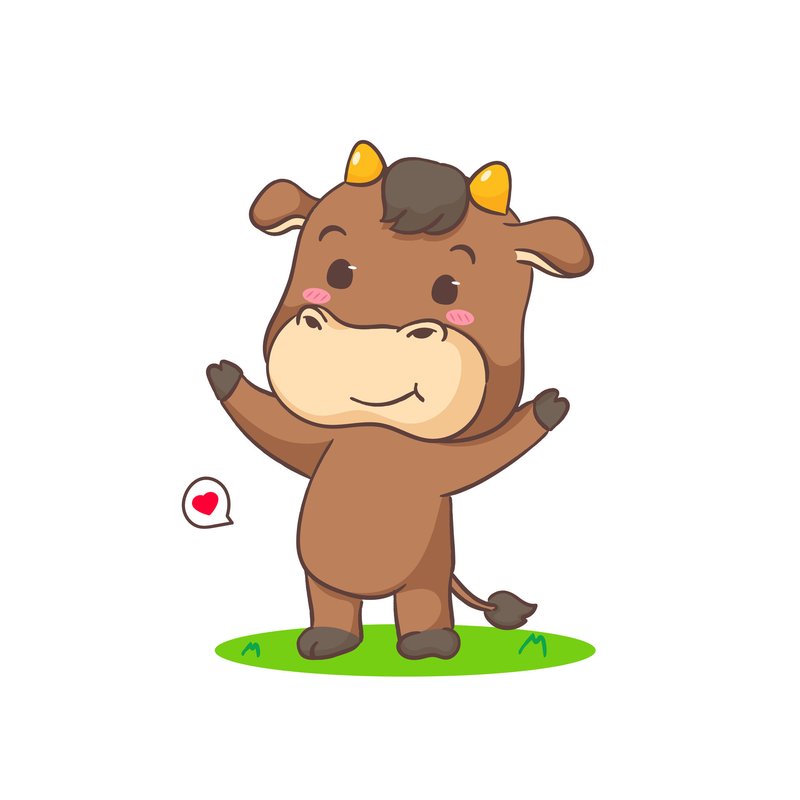
In this article, we’ll explore the intelligence of oxen, how they behave, and what that tells us about their cognitive skills. So grab your coffee, and let’s dive into the fascinating world of these magnificent animals.
Understanding Oxen’s Intelligence
Oxen belong to the bovine family, which includes cows and buffalo. When assessing their intelligence, it’s important to consider not just their ability to learn commands or tasks but also how they interact with their environment and each other. Here’s the thing: intelligence in animals can be tough to define because it often looks different from what we expect in humans.
You might be surprised to learn that oxen can learn a range of commands and tasks. They can be trained to pull heavy loads, navigate obstacles, and even recognize their human handlers. This ability to learn shows they possess a good level of cognitive function. Think of it like training a dog; with patience and positive reinforcement, oxen can master skills impressive for their species.
Interestingly, oxen also demonstrate social intelligence. They live in herds where they form bonds and communicate with one another. This communication can include vocalizations, body language, and even facial expressions. It’s a bit like how we have our own unspoken rules in social interactions—oxen do the same within their groups!
Cognitive Abilities of Oxen
So, what exactly does it mean when we say oxen have cognitive abilities? Well, oxen can problem-solve and adapt to various situations. For example, if they encounter a fence, they might look for ways to get around it rather than simply pushing against it. This adaptability is a strong indicator of intelligence.
In a more controlled setting, scientists have conducted experiments to see how oxen perform tasks. For instance, they might use a simple puzzle to test their problem-solving skills. In these situations, oxen can often figure out how to complete the task, which showcases their ability to think critically about their surroundings.
Let me explain further: it’s not just about brute strength. Imagine you’re trying to open a tricky jar lid—sometimes you have to flip it upside down or tap the edges. Oxen display similar thinking and flexibility when faced with challenges in their environment. They analyze situations rather than just acting on instinct.
Behavioral Insights
When looking at oxen’s behavior, you’ll find that they exhibit traits that indicate a higher level of intelligence. For example, they are known to have good memories. Oxen can remember people and places, which is crucial for their survival. They’ll often recognize caregivers even after long periods apart, indicating not only memory but also a certain level of emotional connection.
Another fascinating aspect is how oxen display emotions. They can become anxious, excited, or even show affection towards their herd mates or human handlers. If you think about it, being able to express emotions is a sign of intelligence. It implies a deeper understanding of those around them and the ability to navigate complex social structures.
Moreover, their grooming behaviors point to a level of social bonding and care. When oxen groom each other, it’s a way to strengthen relationships within the herd. This kind of behavior mirrors our own social interactions, where we show love and support for one another.
Oxen in Agriculture
In the agricultural world, oxen have been used for centuries for their strength and intelligence. Farmers rely on them for plowing fields, pulling carts, and performing tasks that require thought as well as power. Here’s why this matters: the intelligence of oxen means they can be trained to work efficiently, often being more responsive to commands than a less intelligent animal might be.
This training not only makes farming easier but also enriches the relationship between the farmer and the ox. A farmer who understands an ox’s behavior can create a more harmonious working environment. It’s like a team where both sides know each other’s strengths and weaknesses, leading to a smoother operation.
You might be wondering about the shift towards machines in modern agriculture. While machines can often take over the heavy lifting, they lack the adaptability and emotional connection that oxen offer. In areas where oxen are still used, they bring not only brawn but also brains to the farm.
Comparing Oxen to Other Animals
When measuring intelligence, it’s natural to draw comparisons. How do oxen stack up against other farm animals like horses or goats? Horses are often lauded for their intelligence, especially in terms of training and responding to cues. However, oxen have their unique strengths.
For instance, oxen might not be as flashy in their behaviors, but their ability to work tirelessly and comprehend tasks is impressive. They might not show off tricks like a horse might, but their reliability and calm nature make them invaluable. Goats, on the other hand, are known for their clever antics and escape artistry. While they might be more mischievous, oxen excel in teamwork and consistent performance.
Understanding these differences can help us appreciate each animal’s unique role on the farm. Each species brings its own set of skills to the table, whether those are intelligence, strength, or endurance.
How Oxen Learn and Adapt
Learning happens through various methods, and oxen are no exception. They’re capable of observational learning, which means they can learn by watching other animals. If a young ox sees an older one performing a task, it may try to mimic that behavior. This learning style is similar to how humans learn from one another.
Another main method of learning for oxen involves positive reinforcement. When they complete a task correctly, they might receive a treat or praise. This reward-based approach encourages them to repeat the behavior, which helps embed skills over time. It’s a straightforward way of training, and it can be incredibly effective.
Now, let’s think about stubbornness for a second. Oxen can be known for their strong-willed nature, sometimes refusing to perform when they don’t feel like it. This resistance can challenge trainers, but with patience and understanding, the bond deepens, and the ox learns more effectively.
In the end, the combination of observational learning and positive reinforcement shapes oxen into intelligent animals capable of adapting to various tasks and environments.
The Future of Oxen and Their Role
As we move forward in agriculture and animal husbandry, you might be curious about the future of oxen. With advancements in technology, the use of oxen has declined in many regions. However, there’s a growing awareness and appreciation for sustainable farming methods, which often include using oxen.
Oxen can contribute to organic farming by helping till soil without the use of machinery, leading to healthier ecosystems. As more farmers seek sustainable practices, the cognitive abilities and calm nature of oxen make them a reliable choice.
Moreover, there’s a push to educate younger generations about traditional farming techniques. This includes understanding the intelligence and unique behaviors of oxen. By promoting this knowledge, we can appreciate the relationship between humans and these animals and ensure their place in agricultural practices continues.
In conclusion, oxen are more than just hardworking farm animals; they’re intelligent creatures with complex cognitive abilities and social behaviors. From problem-solving skills to forming emotional bonds, their intellect shines through in various ways. As we’ve explored, their role in agriculture is evolving alongside our understanding of their capabilities.
By appreciating their intelligence and behavior, we not only strengthen our relationship with these animals but also promote sustainable practices that benefit everyone. So the next time you see an ox, remember: they’re not just strong—they’re smart, too!

